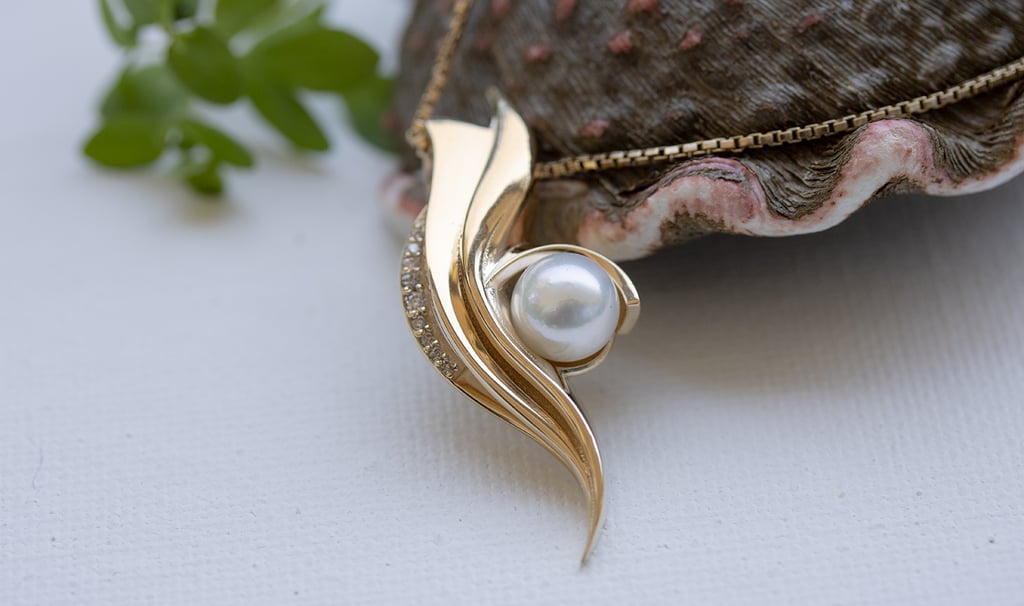The Power of Symbolic Jewelry: Cultivating Compassion and Connection Through Meaningful Adornments
3/21/20254 min read


The Psychological Impact of Symbolic Jewelry
Symbolic jewelry serves as much more than an accessory; it operates as a powerful tool for influencing our psychological state. The act of wearing jewelry adorned with specific symbols can evoke emotions and associations that transcend mere aesthetics. When individuals choose to wear meaningful adornments, like Sharesphere's reminders, they engage in a form of emotional conditioning. This process involves associating particular symbols with positive emotional experiences, thereby fostering empathy and compassion.
From a neuroscience perspective, our brains are wired to respond to symbols through the creation of neural pathways. Each time someone looks at or touches a symbolic piece of jewelry, specific areas of the brain associated with emotions are activated. These associations help cultivate feelings of warmth, understanding, and connectiveness with others. For example, a pendant that symbolizes compassion can elicit feelings of kindness and generosity. Over time, this consistent exposure can reinforce these emotional states, encouraging prosocial behavior in daily interactions.
Moreover, the psychological impact of wearing symbolic jewelry is not limited to the individual alone. When one adorns themselves with symbols that signify compassion or connection, these pieces can initiate conversations and deepen social ties. In group settings, jewelry that shares a common meaning can act as an icebreaker, fostering a sense of community and enhancing interpersonal relationships. This collective experience strengthens the bonds formed between individuals as they share their own interpretations and personal stories related to the symbols worn.
In essence, the interplay between symbolic jewelry and psychology highlights the profound effects that these meaningful adornments can have on our emotional well-being and social connectivity. The consistent practice of wearing such symbols ultimately has the potential to engender a more compassionate society, one adorned with reminders of our shared human experience.
Engaging with Meaningful Symbols
The act of wearing jewelry serves as more than merely an aesthetic choice; it embodies a ritualistic engagement with symbols that resonate deeply on emotional and psychological levels. By adorning oneself with meaningful symbols, individuals can cultivate an environment of compassion and connection, enhancing their overall well-being. This daily ritual creates a sensory experience that anchors positive emotional states, allowing one to draw upon the jewelry's significance during various moments of life.
Jewelry often carries personal stories or cultural meanings that serve as reminders of cherished relationships, personal values, or life milestones. For example, a pendant shaped like a tree of life can symbolize growth and resilience, encouraging the wearer to reflect on their journey of personal development. Engaging with such a symbol daily can reinforce a mindset focused on positivity and strength. This repetitive interaction with symbols can solidify behavioral patterns, making it easier for individuals to embody the qualities they represent.
Anecdotal evidence illustrates how this engagement manifests in everyday life. Consider a mother who wears a necklace with her child's birthstone. Each time she touches or sees the necklace, she is reminded of her love and commitment, which can evoke feelings of tenderness and nurturing. Such physical rituals not only create emotional recall but also serve as touchpoints for connection to shared meanings with the people involved. For instance, families might pass down heirloom jewelry as a way to preserve lineage, fostering unity among generations.
Thus, by actively engaging with meaningful symbols in our jewelry, we can elevate our emotional wellness and strengthen our connections to ourselves and others. The sensory experience of wearing jewelry transforms it into a powerful tool, enabling us to navigate life's complexities with greater compassion and empathy.
The Neuroscience of Compassion and Empathy
The study of neuroscience provides valuable insights into the mechanisms of compassion and empathy, fundamental components of human connection. Research indicates that specific brain regions, including the medial prefrontal cortex and the anterior insula, play vital roles in these emotional processes. The medial prefrontal cortex is particularly significant for complex social emotions and moral reasoning, allowing individuals to navigate intricate social landscapes. This area becomes activated when an individual reflects on the feelings of others, thus linking it directly to the capacity for empathy.
Similarly, the anterior insula is essential in understanding and processing emotional responses, serving as a bridge between perceptual and affective experiences. Activation in this region is associated with the bodily sensations related to emotions, such as the discomfort of witnessing another’s suffering or the warmth of shared joy. Together, these brain areas form a network that underpins the capacity for emotional resonance, enabling individuals to respond to others with compassion.
The act of wearing symbolic jewelry can serve as a ritualistic expression that fortifies this neural framework. Engaging with jewelry that holds personal meaning can stimulate the activation of these brain regions, reinforcing pathways linked to compassion and connection. Over time, the repeated act of adorning oneself with such symbolic pieces may enhance one's sensitivity to the emotions of others, cultivating a greater sense of empathy. This interplay between adornment and emotional processing exemplifies how meaningful jewelry transcends aesthetics, functioning as a catalyst for emotional growth and social bonding. The resulting effects on the brain not only facilitate connections with others but also encourage ongoing emotional resonance in everyday life, ultimately benefiting both the wearer and those around them.
Cultivating Mindfulness Through Jewelry
Jewelry has long been more than mere ornamentation; it can serve as a potent tool for cultivating mindfulness in our daily lives. The ritual of wearing symbolic jewelry can act as a consistent reminder to pause and reflect, ultimately leading to a greater sense of awareness and presence. By intentionally integrating these meaningful adornments into our routines, we can transform the act of wearing jewelry into a practice of mindfulness.
To begin, individuals can choose specific pieces of jewelry that resonate deeply with their values or intentions. Whether it is a necklace with a charm representing compassion, a bracelet signifying resilience, or a ring denoting a personal journey, selecting jewelry with meaning can foster a sense of connection to oneself. Each time the piece is worn, it serves as a gentle nudge to engage in mindfulness practices. For instance, wearing a ring on a stressful day can serve as a prompt to take deep breaths and recenter one's thoughts.
Incorporating intentional moments throughout the day can enhance this practice. When adorned with symbolic jewelry, individuals can create small rituals, such as taking a moment in the morning to reflect on the meaning behind the chosen piece or using it as a focal point during meditation. Engaging in this kind of reflective practice can promote emotional engagement and deepen our understanding of both ourselves and our relationships. The presence of meaningful jewelry becomes a conscious effort to remind ourselves to cultivate compassion, not only for our own experiences but also towards others.
By reshaping our perceptions of jewelry and recognizing its potential as a mindfulness tool, we can create a more compassionate and connected existence. This daily reminder to engage mindfully and empathetically can ultimately enhance our mental well-being, encouraging us to embody the values that our symbolic jewelry represents.
